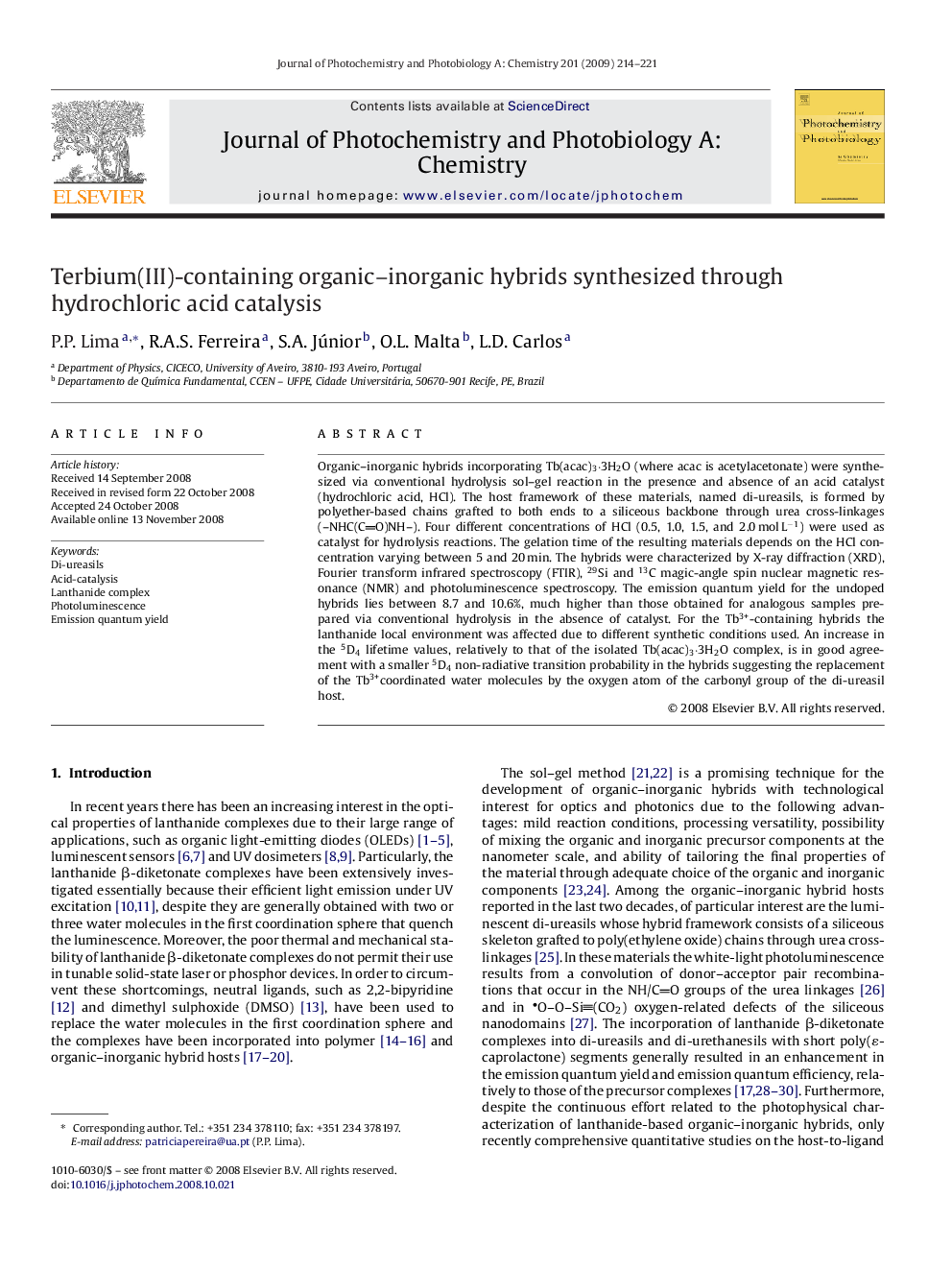| کد مقاله | کد نشریه | سال انتشار | مقاله انگلیسی | نسخه تمام متن |
|---|---|---|---|---|
| 28967 | 44109 | 2009 | 8 صفحه PDF | دانلود رایگان |

Organic–inorganic hybrids incorporating Tb(acac)3·3H2O (where acac is acetylacetonate) were synthesized via conventional hydrolysis sol–gel reaction in the presence and absence of an acid catalyst (hydrochloric acid, HCl). The host framework of these materials, named di-ureasils, is formed by polyether-based chains grafted to both ends to a siliceous backbone through urea cross-linkages (–NHC(CO)NH–). Four different concentrations of HCl (0.5, 1.0, 1.5, and 2.0 mol L−1) were used as catalyst for hydrolysis reactions. The gelation time of the resulting materials depends on the HCl concentration varying between 5 and 20 min. The hybrids were characterized by X-ray diffraction (XRD), Fourier transform infrared spectroscopy (FTIR), 29Si and 13C magic-angle spin nuclear magnetic resonance (NMR) and photoluminescence spectroscopy. The emission quantum yield for the undoped hybrids lies between 8.7 and 10.6%, much higher than those obtained for analogous samples prepared via conventional hydrolysis in the absence of catalyst. For the Tb3+-containing hybrids the lanthanide local environment was affected due to different synthetic conditions used. An increase in the 5D4 lifetime values, relatively to that of the isolated Tb(acac)3·3H2O complex, is in good agreement with a smaller 5D4 non-radiative transition probability in the hybrids suggesting the replacement of the Tb3+coordinated water molecules by the oxygen atom of the carbonyl group of the di-ureasil host.
Journal: Journal of Photochemistry and Photobiology A: Chemistry - Volume 201, Issues 2–3, 25 January 2009, Pages 214–221